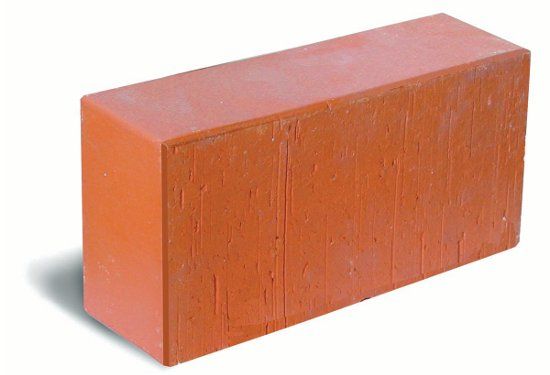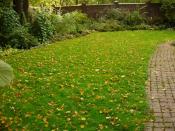Search
Login
We choose a brick for building a house, how to do it right
This material has so long appeared in the arsenal of builders that history is unlikely to unambiguously confirm what the first houses were made of, brick or wood (we, of course, do not take into account caves and dugouts). The centuries-old practice of use has brought this building material to perfection and it is already very easy to get confused in the types and purposes of brick. There is a ton of information on the Internet, but it is scattered by brand and type, and it is important to clearly understand what is needed for a particular building during construction. Therefore, there is a need to summarize information on the types of bricks, their characteristics, cost and methods of work, so that before buying you can even distinguish them superficially, so that you can talk objectively with sellers and not let yourself be deceived (it's not a secret that sometimes people try to attach us with something else what you need, and even a frank marriage).
Content
- Brick as a building material
- Types of bricks
- Brick making video
- Ceramic brick
- Ceramic hollow brick
- Facing brick video
- Refractory brick
- Silicate brick
Brick as a building material

Artificially created building bricks are known as materials for the construction of buildings not just centuries, but millennia. The convenience of using small cubes of strong composition did not go unnoticed by the ancient builders, because it is much easier to build not only simple brick houses, but also magnificent palaces, an example of the construction of Egyptian pyramids, when huge blocks were required to be raised to a great height. And although slave labor was available in antiquity, the use of bricks expanded throughout the planet. At the same time, there was an improvement in the properties of the material, the most durable components were selected. In the end, today we have different types of cheap and reliable building material.
Brick production is established in all countries, and in the most advanced technologies they allow to produce a huge amount of products of the highest quality. Each facet of a brick has its own name (which is interesting, the names are registered in GOST!). The widest (working) edge is called the bed, the lateral long edge of the spoons, and the lateral short poke.
Types of bricks
There are several dozens of types of bricks, different in composition and scope, but in modern large-scale construction usually a limited amount is used. We will consider them, since even one type has several options for execution. According to the manufacturing technology, the brick is divided into:
- clay fired ceramic, better known to us as red brick
- silicate, which is molded under pressure from a mixture of sand and lime, followed by drying, this type is called white brick
- pressed, also from a mixture, but made by vibrocompression (this type is not used in construction work)
Brick making
Brick manufacturing technology has undergone significant changes over the past decades, and now brick is mainly produced in a fully automated and mechanized way, only in the backward regions it is still made manually. The production process is clearly shown in the video presented. At such a plant, it is possible to make several million pieces of brick per year.
Ceramic brick
Solid brick, devoid of any voids, natural or artificially created. In the everyday life of builders, a solid brick is called an ordinary brick, from the function stacked in rows.

The only possible violation of the correct quadrangular geometry is the creation with a certain technology on the working surface of the bed around the entire perimeter of a small ledge for a more snug fit of the edges of the brick. It is best suited for wall construction, as it withstands maximum load. The full-bodied appearance of the brick is also applicable to the silicate product.
Ceramic hollow brick
Unlike corpulent bricks, special voids are arranged in this type of bricks, which serve to increase sound insulation, heat resistance and make the brick light.

Hollow brick is used for general construction work on low buildings, as well as for finishing work of laying partitions, balconies, etc. Recent developments by engineers have made it possible to produce hollow silicate bricks.
Facing brick
Facing brick is characterized by the perfect appearance of one surface, which, of course, looks out.

According to the technology, the outer part of the building is not lined with the facing brick, but it is also used in the construction of fences and utility rooms, as well as for the laying of the second outer row of stoves and fireplaces. The figured brick also belongs to facing, which does not harm the structural properties, but only emphasizes the individuality of the building.
In modern suburban housing construction, facing brick is very popular in the construction of socles. This type of brick can be of different colors and shades, which simplifies the selection procedure when creating the original drawing of the building.
Refractory brick
Refractory brick has found its permanent application in summer cottage construction as a material for the internal arrangement of furnace chambers of stoves and a fireplace, and with a large temporary load on the stove for facing the inside of the chimney and chimney.

It is made of special refractory clay (fireclay) and can withstand temperatures up to 1000 degrees with prolonged use.
Silicate brick
Building material, without which virtually no construction is possible silicate brick. Even in a completely wooden house there are places that require its application. As mentioned above, this type of brick is made from a mixture of sand and lime (called silicate), by partial pressing followed by heat-wet processing in a special chamber (autoclave).

The main disadvantage of silicate brick is its low moisture resistance, so it can not be used in the construction of basements, foundations and various kinds of wells. However, these shortcomings are fully compensated by the numerous advantages of silicate brick with frost resistance, high strength (standard guarantee for high-quality silicate brick 50 years) and environmental friendliness, since only natural components are used in its production.





